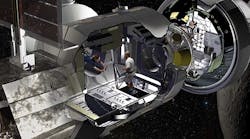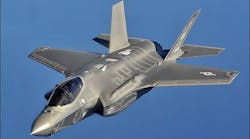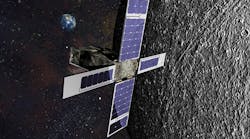Lockheed Martin is converting a pressurized container developed to transfer cargo between the Space Shuttle and the International Space Station to serve as a prototype habitat for astronauts serving in “deep space.” The project is part of the second phase of the Next Space Technologies for Exploration Partnerships (NextSTEP) program that NASA initiated last year, in partnerships with private companies like Lockheed to develop habitats and systems to keep astronauts safe when operating in deep space as part of the Orion spacecraft program.
This project will be carried out over 18 months and will build on concepts developed during NextSTEP Phase I. The results, which will be provided to NASA, “will further the understanding of the systems, standards, and common interfaces needed to make living in deep space possible,” according to Lockheed.
In Phase II, Lockheed and others will work with NASA to identify system requirements for the “Deep Space Gateway,” a manned “cislunar space station” (i.e., operating between the Earth and the moon) that NASA aims to build and use as a staging platform for deep-space missions.
According to NASA, the area of space near the moon offers “a true deep space environment” to gain experience for human missions farther into the solar system. It also will allow access to the lunar surface for robotic missions, with the ability to return to Earth in days if necessary, not weeks or months.
Exploration in the vicinity of the moon will begin with the first integrated mission of the Space Launch System (SLS) rocket and Orion spacecraft. The construction of the Deep Space Gateway is projected for the 2020s.
Lockheed will build the full-scale habitat prototype at the Space Station Processing Facility at NASA's Kennedy Space Center in Florida, and a deep-space avionics integration lab near Johnson Space Center.
The prototype will be built by refurbishing the Donatello Multi-Purpose Logistics Module, one of three large vessels carried in the Space Shuttle payload bay and used to transfer cargo to the ISS.
"We are excited to work with NASA to repurpose a historic piece of flight hardware, originally designed for low Earth orbit exploration, to play a role in humanity's push into deep space," stated Bill Pratt, Lockheed Martin NextSTEP program manager. "Making use of existing capabilities will be a guiding philosophy for Lockheed Martin to minimize development time and meet NASA's affordability goals."
According to Lockheed, designing and developing the habitat will make extensive use of “mixed reality” (virtual and augmented reality) prototyping to reduce cost and schedule, as well as to identify and resolve issues during the design phase.









